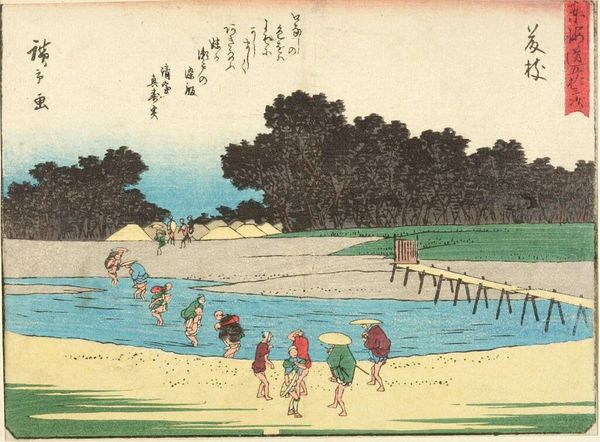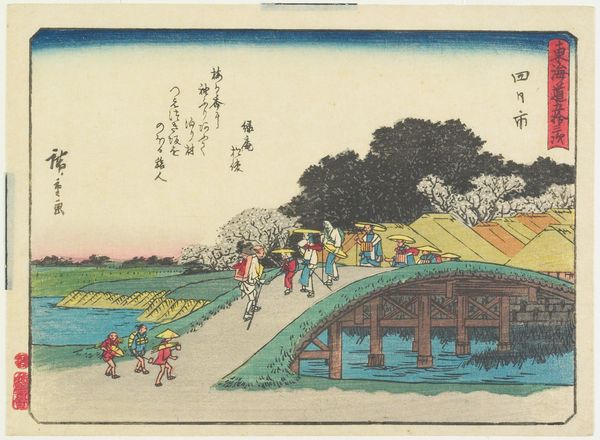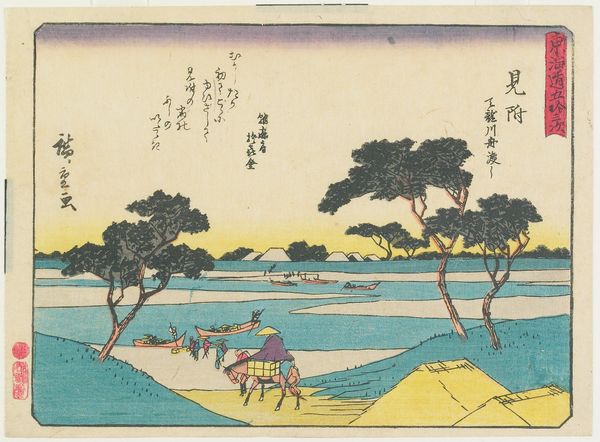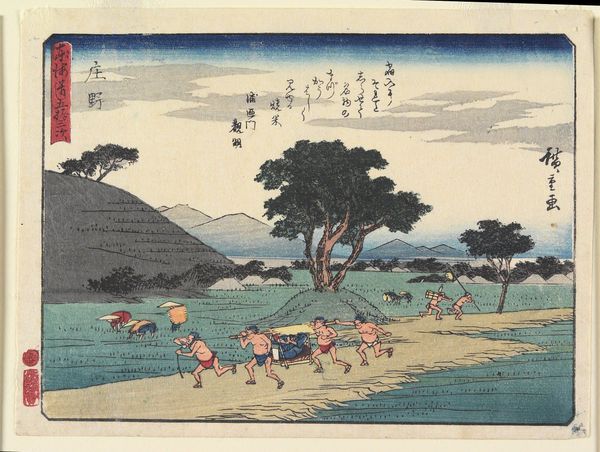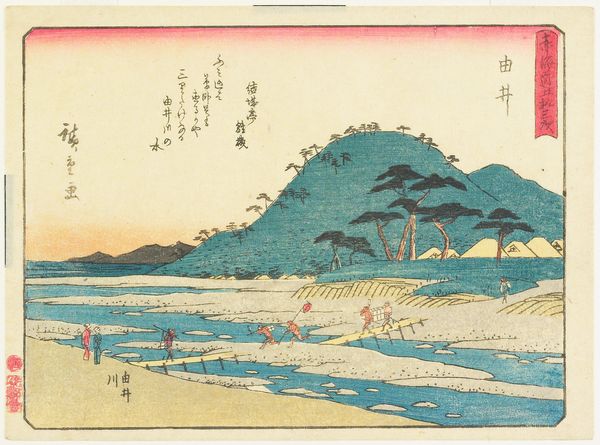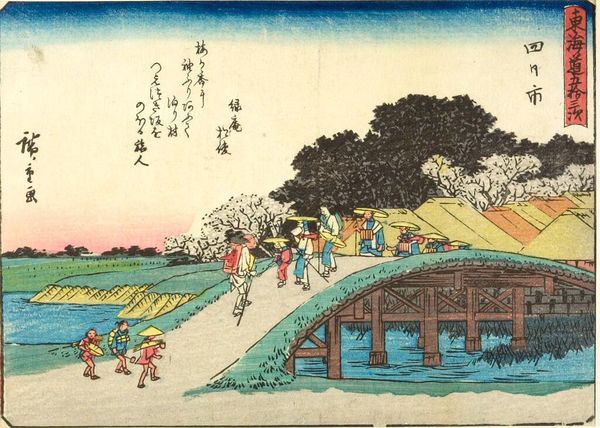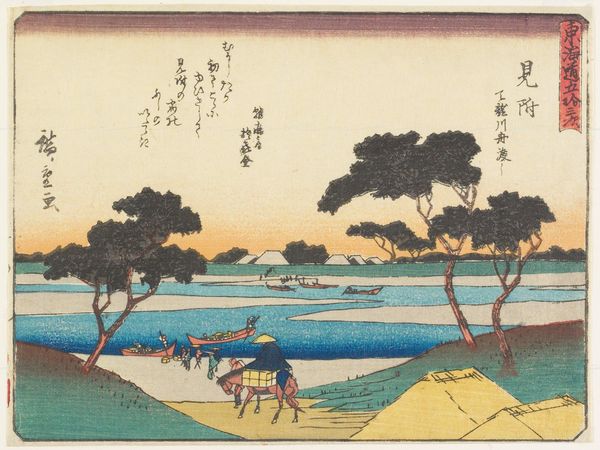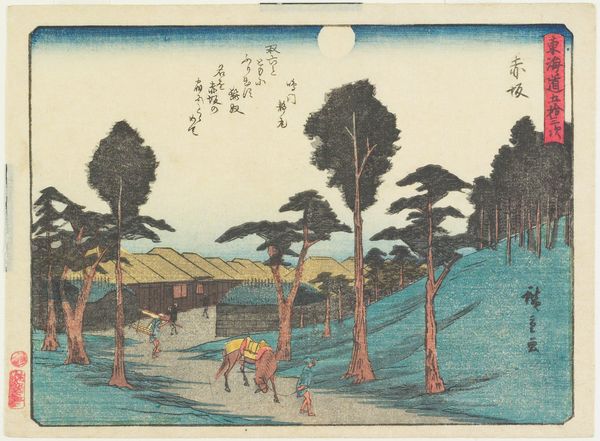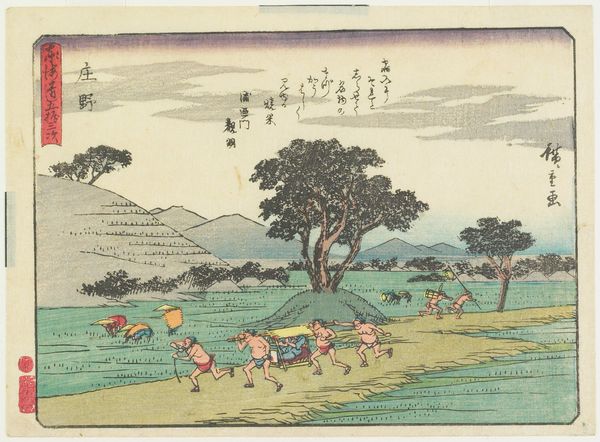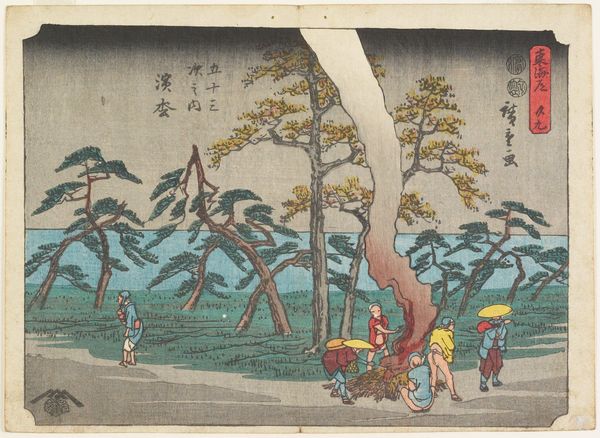
print, ink, woodblock-print
# print
#
landscape
#
ukiyo-e
#
ink
#
woodblock-print
Dimensions: 6 1/8 x 8 1/4 in. (15.6 x 20.9 cm) (image)6 5/8 x 9 in. (16.9 x 22.9 cm) (sheet)14 x 17 15/16 in. (35.5 x 45.5 cm) (mat)
Copyright: Public Domain
Editor: So, here we have "Fujieda," a woodblock print in ink from around 1840-1842, by Utagawa Hiroshige. It’s a classic landscape with figures crossing a shallow river. It feels… surprisingly contemporary, I think, in its flattened perspective and focus on everyday life. How do you interpret this work? Curator: Well, "contemporary" is a great way to frame it. Consider ukiyo-e prints not simply as beautiful landscapes, but as vital documents of a rapidly changing society. Think about the socio-political context of the Tokugawa Shogunate. What did it mean to depict everyday people traveling along the Tokaido Road, experiencing nature? How might these images function as both travelogue and social commentary? Editor: Social commentary? I guess I hadn't really considered that. I mostly saw a peaceful scene, a record of a place. Curator: Look at the composition. The travelers, small figures dwarfed by the landscape, are positioned between the dense, almost oppressive, forest and the implied vastness of the route ahead. Who had access to travel and why? What restrictions were in place and who benefited? Hiroshige isn't just showing us pretty scenery; he's subtly suggesting the social and economic realities of travel. Editor: That makes me see the journey, the *crossing* of the river, as more symbolic. The physical act speaks to perhaps societal progress or... maybe even resistance, moving through spaces not equally accessible. Curator: Exactly. And the act of disseminating prints itself was subversive. Think about the potential for circulating ideas, experiences, glimpses into different social strata, at a time when strict hierarchies were in place. Each print became a micro-intervention. What limitations were placed on artistic freedom, how might the choice of printing techniques subvert dominant art establishment ? Editor: Wow, I was so focused on the aesthetic that I totally missed that socio-political dimension. Now I’m seeing so much more nuance. Thanks! Curator: Precisely! Always remember to ask "Who has the power?" That applies just as much in art history as it does today.
Comments
No comments
Be the first to comment and join the conversation on the ultimate creative platform.
